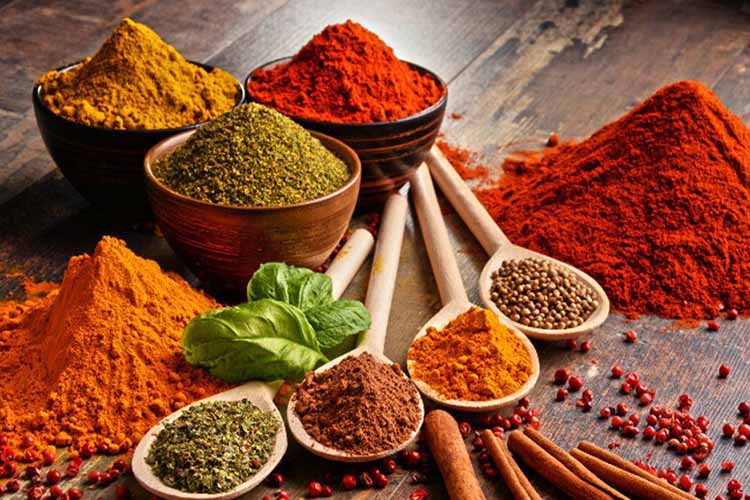How to pack spices: 3 types of packaging containers
Without adding more fat, sugar, or salt, spices and herbs are an excellent way to enhance the color, flavor, and smell of food. They provide potent antioxidants among many other health benefits. The global spices market size is estimated at USD 9.68 billion in 2020 and is expected to grow at a CAGR of 6.5% during the period 2021-2027. East Asia dominates the world herbs and spices market.
Residential and commercial owners want to know the best way to package their spices. Great packaging of spices helps keep herbs spices fresh for a long time while maintaining their natural flavors, colors, and aromas. Due to its widespread use in cans bottles, and bags, plastic is the most common material used in spice packaging. By 2021, the global packaging market is expected to reach approximately $966 billion.

Packaging types of herbs and spices
Considering how to package spices? There is a wide range of packaging options for spices and herbs. Below are the most common types of packaging for spices and herbs.
Pouch/sachet/bag packaging
There are several different types of bag packaging, including vertical bags, flat bags, flat bottom bags, clear bags, nozzle bags, kraft bags, re-sellable bags, etc. Because pouch packaging is flexible rather than rigid, it has many advantages.
Compared to bottles, cans and other rigid rigid packaging, flexible bags or pouch packaging uses 75% less material to make the same amount of final product. The most common types of spices and herbs stored in bags or pouches are turmeric, coriander powder, paprika, black pepper, cumin seeds, bay leaves, cinnamon, paprika, nutmeg, coriander, etc.
Advantages
- Bag or pouch spice packaging can be closed tightly to keep spices and herbs fresh.
- Due to the flexibility of the bag packaging, the bag or pouch will not break, crack or tear if dropped.
- Bag packaging is ideal for on-the-go applications and reuse because it is easy to close and reopen.
- The bag or pouch form of packaging allows for full body branding and graphic designs.
- People can see what spices or herbs are packaged in these clear bags.
Disadvantages
- Bag or sack packaging maintains limited heat resistance.
- Not suitable for premium packaging
- Recycling plastic bag packaging can be challenging, and landfill degradation can take a long time.
Bottle packaging
Packaging bottles usually have a narrow neck and mouth. Glass and plastic are two common bottle materials, both of which can be molded into the desired shape, whether square, round, or any other shape. The most common types of herbs and spices stored in bottles are chili flakes, turmeric, oregano, perique, thyme, masala, pepper, curry powder, cumin seeds, etc. It would be beneficial to choose a professional spice jar filling and packaging manufacturer.
Advantages
- Plastic bottles are lightweight, so they are easy to carry around.
- Clear glass or plastic bottles allow people to see what spices or herbs are stored inside.
- Products used to package plastic bottles retain good molding and processing characteristics.
- The bottle packaging does not change the flavor or aroma of the spices and herbs.
- Products used to package plastic bottles retain good molding and processing characteristics.
- Plastic bottles do not break when dropped.
Disadvantages
- Glass bottle packaging is usually heavy and a bit expensive.
- If a glass bottle falls to the floor, it can break and cause a mess in your home.
- Plastic bottle packaging is not biodegradable.
Jar/can packaging
The most popular type of metal packaging is the can, which is made of steel or aluminum, sometimes made of paper. Not only is canned packaging very effective, but it is also more affordable. The most common types of spices and herbs found in various cans are mustard seeds, turmeric, chili powder, cumin seeds, coriander powder, carrot seeds, pepper, etc.
Advantages
- Metal cans and jars will be able to withstand a certain amount of pressure because they are made of metal.
- If the cans are dropped, there is little chance for spices and herbs to scatter on the floor.
- Cans made from steel, tin, and aluminum can be recycled to some extent.
- Metal can packaging ensures a longer shelf life and reduces spoilage costs.
- The fact that the cans are relatively light is an important benefit.
- The cans can be stacked one on top of the other without breaking, so they will take up less space.
- The fact that the cans are relatively light is an important benefit.
Disadvantages
- The use of cans and jars made of metal can lead to the depletion of resources.
- In some cases, metal cans or jars may rust.
Conclusion
There are 3 different types of packaging containers for spices, pouch/bag packaging, bottle packaging, and can/jar packaging. Different packaging containers are suitable for different packaging demands. And there is no doubt that pouch/sachet/bag packaging is the most popular packaging type. Henan Top Packaging Machinery is a famous spice packing solutions supplier in China. We provide quite reliable and competitive spice powder packaging machines and packaging bags. Welcome to consult us for more helpful details if you need them.
